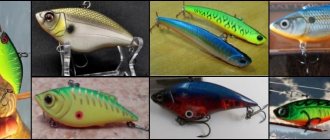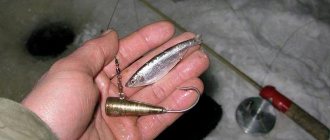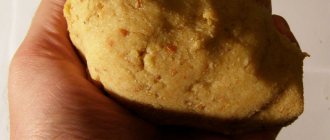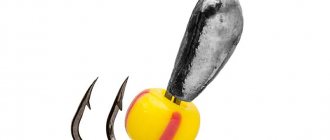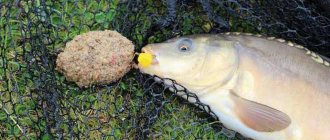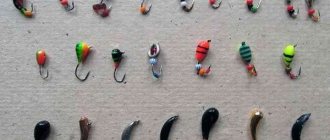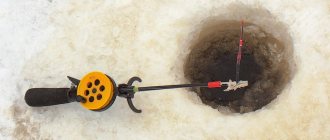Where to catch silver bream in winter and where to stay
The silver bream is found in various bodies of standing water, as well as in rivers. In addition, it is found in reservoirs and large lakes. This is a common type of fish that is caught both in summer and winter. The silver bream leads a gregarious lifestyle, therefore, catching it comes down to a simple task - finding a school of silver bream. The task can be simplified somewhat if you use bait. It can not only lure fish, but also keep it for some time at the fishing point. If the flock is found, then an active and stable bite is guaranteed. But this does not mean at all that bait sprinkled anywhere in the reservoir will be able to attract fish. Effectiveness can only be ensured by finding a promising location. After all, in winter the fish are not in their usual places.
The silver bream, like most fish, is very wary of various extraneous noises and strange movements. Behavior on ice should be as silent as possible. The sounds that the ice drill creates also scare away the silver bream. She can return to the hole only if bait is used.
The reservoir has characteristic places where you can find silver bream in winter:
Pits
They are a reliable winter shelter for most species of fish, including the silver bream, which lives in such places in whole schools. The silver bream can be found at a depth of 3 meters or more. If such a place is found, then it is better to fish it. Preferably using bait. Such places are also interesting because in addition to the silver bream, the catch can also be replenished with bream or roach.
Summer feeding areas
In traditional summer feeding areas, silver bream may appear during thaw periods when the ambient temperature rises. Typically, these are places with a depth of 1 to 2 meters.
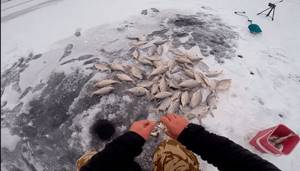
Reverse current
These are very interesting places for the silver bream. Usually, larger individuals are caught here, but such places are quite dangerous, since the current can wash away the ice. In general, winter fishing is not an absolutely safe activity.
In areas with weak currents
In areas with fast currents, the silver bream does not feel comfortable, therefore, it chooses places where there is a current, but it is weak.
Having decided on a catchable place, you can start drilling holes. Any drilling pattern is selected, depending on the nature of the reservoir: drilling holes in a checkerboard pattern, drilling holes in an arc, drilling holes in a straight line or drilling holes from the center. You should drill at least 5 or 10 holes at a distance of 5-10 meters from one another. The tactics are as follows: drill the first hole and immediately feed, drill the second - and feed, etc. They start fishing from the first hole. If the silver bream is gone, it won’t be for long. She will return in about 15 minutes, attracted by the aroma of bait. If there is no bite within 5 minutes, then you can move on to the next hole. Similar actions are carried out until a bite follows. If there are no bites, then this is a signal that you will have to look for a new place and drill holes again. This factor indicates how difficult this winter fishing is.
Choosing a place to catch silver bream
Having decided on the fishing spot, start drilling holes. They begin to be made from the shore, gradually moving towards the middle of the reservoir at a distance of about 20-30 m from each other. Bait is poured into the holes - porridge, breadcrumbs, food bloodworms or any purchased food for winter fishing. The main thing is to know when to stop. Too much bait can satiate the fish and cause it to abandon the bait on the hook.
After the hole has been fed, you need to wait for some time until the silver bream approaches its smell. Experienced anglers mark their holes with flags. This is done in order, firstly, not to confuse your holes with others. And secondly, this way they will be more visible from a distance and will not get lost during snowfall.
If you have already fished in this place and you still have holes left after a previous fishing trip, then it is better not to fish in them - the silver bream does not like to feed in one place. Most likely, she will start looking for food somewhere else. Although, there may be exceptions to any rule. It all depends on the habits of the silver bream in a particular body of water.
Live bloodworms, maggots or small worms are most often used as bait.
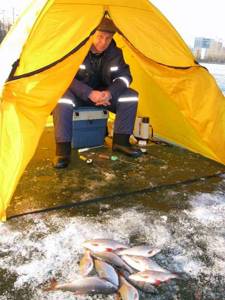
It is recommended to start fishing from the upper layers of water, gradually lowering the bait closer to the bottom. This way you can determine the depth at which the flock is standing. Once you have decided on the location of the fish, you can safely drill a few more holes at a distance of 40-50 cm from each other.
The winter bite of silver bream is not much different from the bite in open water. The slightly submerged float will first tremble and then confidently go down. At the moment of its immersion, it is necessary to make a sharp short hook.
If there is no bite, then you will have to start looking for picky fish. Winter fishing for silver bream, unlike summer fishing, requires special activity from the angler. The best catch will go to the fisherman who is not lazy, who drills many holes and often changes fishing spots.
The silver bream, due to its vitality, is an excellent live bait when catching predatory fish species.
Silver bream is a very bony fish. Because of this, it is not particularly popular among housewives. But it is good dried or smoked as a snack for beer.
The best time to catch silver bream is in winter
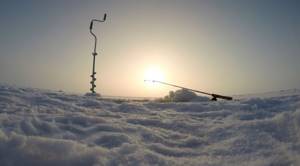
White bream is actively caught throughout the day, but with the onset of darkness its activity stops. Moreover, it bites in any weather, both during periods of thaw and during periods of severe frost. It seems that the silver bream is not affected in any way by pressure changes and sudden changes in weather conditions. In this case, it can compete with burbot, for which the harsher the winter, the better for it. But this does not mean at all that it behaves equally actively in all bodies of water. If fishing is carried out in a familiar body of water, then calculating its activity is quite simple. As for an unfamiliar body of water, everything is much more complicated here. Going to such a body of water, you can be left without a catch, especially if you fail to find a catchable place. At the same time, you need to know whether there is a silver bream in it. It may happen that it will not be in the reservoir and all efforts aimed at catching this fish will be in vain.
The silver bream is most active on the first and last ice. During this period, fishing can be not only productive, but also dangerous, since the ice may not be so strong, especially when the first ice appears.
Fishing only
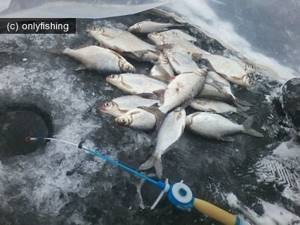
Silver bream is a little-known but very tasty fish that resembles ordinary bream in almost every way. For those who are interested in fishing in the winter, this fish is a very interesting specimen that has its own character and requires a special approach. In winter, this fish is especially active, due to which many fishermen pay a lot of attention to it and carefully study the peculiarities of its behavior. The purpose of this article is to learn to understand all the intricacies of winter fishing for silver bream, after getting acquainted with which you will be able to show good results and be content with a large catch.
Where should you catch silver bream in winter?
The habitat of this type of fish is quite common in almost all regions.
You can find it both in standing reservoirs and in large and small rivers. The silver bream is always found in the wild, and therefore the main goal for every fisherman is to find it. If you find a school of this fish, then consider that the catch was a success. The main thing is to properly feed and attract the fish so that after some time it does not swim away to another place. Using bait where there are no schools of silver bream is a pointless exercise, because the chance that it will come to the scent is very, very low. When fishing on ice, the scheme is almost the same. The only thing you need to remember is careful behavior. On ice you need to behave extremely quietly and carefully, because the silver bream is a shy fish and at any rustle it can swim as far as possible from the source of the sound. Even just drilling into the ice will scare away the fish for quite a long time. If you do not use bait, it is unlikely to return to its old place.
Although silver breams are found almost anywhere in the reservoir, there are still places where their activity at any time of the day is the highest. Among them: • Places where fish fed in the summer; • Lakes and rivers with weak currents; • Deep holes; • Reservoirs with reverse flow.
Once you have decided on the fishing location, you can start drilling the hole. For maximum fishing efficiency, it is advisable to drill several holes, simultaneously feeding the previous hole. In this way, you can make about five baited holes, which we will alternate with each other during the fishing process.
What bait should I use for silver bream?
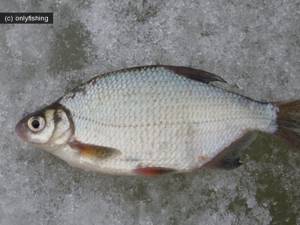
This fish has no special preferences. It is equally well caught on maggots, worms and bloodworms, like all varieties of fish familiar to us. If the bait is small (for example, bloodworm), then it is advisable to put several pieces on one hook. As mentioned above, the silver bream is a very smart and cautious fish, so it will look at a bare hook with caution and is unlikely to swim closer to it. To deceive it, it is enough to hide the sting by correctly placing a small amount of bait. In addition, the hook itself should be small in size, because the mouth of the silver bream is quite small and cannot swallow large hooks.
When can you catch silver bream?
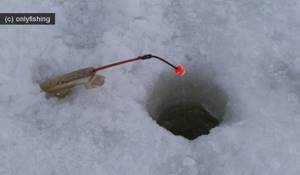
The activity of this fish knows no bounds. Its bite practically never stops during the daytime, regardless of the temperature and time of year. You don't have to worry about it being inactive due to weather conditions and not biting well. The main thing is to determine the peak activity of the fish, which may change from time to time. It often happens that silver breams are active all day long without stopping, not stopping the bites even in the late afternoon. As for the most successful conditions for catching it, everything is simple. You can catch the most white bream after the frost has consolidated the water of the reservoir and covered it with a sufficiently strong layer of ice. Are you interested in calculating the average salary? Find out all the necessary information on the website lev-cons.ru
What to catch silver bream in winter, the best baits

In winter, they mainly use bait such as dung worms, maggots or bloodworms. Combinations of these components, so-called “sandwiches,” show good results.
If fishing is carried out with bloodworms, then it is better to plant an odd number of larvae - 1, 3, 5, etc. For unknown reasons, the silver bream prefers exactly this number, as if it can count.
It should be inserted so that the hook tip is securely hidden. The silver bream will not take the bait if it suspects something, especially a protruding hook tip.
The silver bream does not have a large mouth, so you will have to use the smallest jigs with the same small hook. Gustera prefers jigs in the form of a shot or a drop, which are silver in color. At the same time, very often, an “ant” type jig catches any other jig.
Where to look for silver bream in February
Fishing for silver bream in February will be successful if you take into account all the nuances of the behavior of this fish during the freeze-up period. When purposefully catching the February silver bream, you should pay attention to the following features:
• When choosing a fishing location, it is necessary to take into account that this fish lives above a clayey or silty bottom with sparse underwater vegetation. During the period of freeze-up, the silver bream spends most of its time in depressions up to 10 meters deep. Lack of food stimulates movement. The fish avoids fast currents and often enters deep river bays for the winter;
• Gustera avoids noisy crowds of fishermen. Even regularly repeated noise from an ice auger can cause fish to move downstream to calmer areas. Therefore, it is advisable to choose bays with a small number of fishermen;
• The use of bait allows you to attract and keep fish in the fishing area. For bait, slowly sprayed ingredients are used: breadcrumbs, steamed porridge and crushed bait used. The “edible” part is mixed with the soil in a 1:1 ratio. It is advisable to prepare the soil in advance.
Tackle for catching silver bream in winter
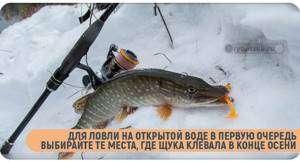
As a rule, a regular winter fishing rod with a nod or a float . Most winter fishing enthusiasts use a fishing rod with a nod. For fishing for silver bream, such a fishing rod is ideal and there is no point in inventing something extraordinary. The fact is that the bites of this fish are quite cautious and the float is not able to respond to the bite in time. Therefore, to catch it, it is better to take a winter fishing rod with a sensitive nod.
To catch silver bream in winter, the tackle must meet certain requirements. Therefore, the following gear elements are selected:
- Line diameter 0.08-0.15 mm. The optimal option is 0.12 mm.
- A small jig, with a body of 2-3 mm and a small hook.
- Sensitive nod.
- Sensitive float, if the tackle is float.
It is not recommended to deepen the tackle, as a thicker line can alert rather cautious fish, such as silver bream.
Tackle for winter bream and ice fishing tactics
The bite of the silver bream is always extremely careful, so the best results are achieved by a fisherman armed with a winter fishing rod with a nod. The float does not allow you to show the desired reaction to a bite, therefore it is used much less often. There is no particular point in using anything else for fishing; a winter fishing rod is sufficient for catching silver bream from the ice.
Gear must meet the following requirements:
- The thickness of the line is in the range of 0.08 - 0.15 mm. Good results are achieved with a fishing line 0.12 mm thick.
- Sensitive nod.
- A jig with a small hook and a body of 2–3 mm.

If float tackle is used, the float should be as sensitive as possible.
Particular attention is paid to the jig. The silver bream has a small mouth, so the hooks must be small so that the fish can swallow them. You can use jigs of any type and color directly for fishing; some fishermen claim that an ant-shaped jig works great. For luring, it is better to take a drop-shaped jig of silver color.
On the Volga, blyamba is very popular, although some fishermen call it differently. This is a large jig in the shape of a cone and weighing 10–15 g. This choice is not accidental: the Volga and its tributaries have a fairly strong current, on which the jig behaves best. In skillful hands, the tackle rarely gets tangled and holds perfectly, which is not possible with other types of jigs. As bait, Volga fishermen use earthworms, mounted in the form of brushes. With such equipment you can even catch predators, but more often you come across silver bream, perch and pike perch, and at the end of winter, ide.
Sometimes Volga fishermen tie a leash 50–80 cm long with hooks No. 12–14 above the jig on the white bream. If necessary, they increase the thickness of the fishing line to 0.17 mm, which does not negatively affect the quality of the bite - on some days they catch up to 15 kg of large fish. This gear allows you to fish at a depth of up to 10 m in places with a current of medium strength. The weight of the sinker is selected individually: it needs to be slightly carried downstream. The fishing technique here is simple: the bait is cast downstream a little, then long pulls are made.
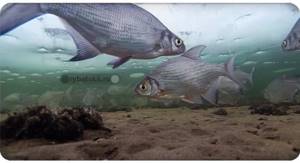
There are several ways to catch silver bream in winter using a jig. Fish can be found on different water horizons, including near the lower edge of the ice. Therefore, it is necessary to systematically change the fishing depth.
If the fish is on the bottom, you can swing the jig at a height of 5–10 cm from the ground, periodically letting it run along the bottom. In this way, it is possible to stir up the silt, which attracts a flock of silver bream. Another method involves using a slow retrieve to a height of about 30 cm, then lowering the jig to its original depth with a gentle rocking motion. This method will be effective if you can set the depth correctly.
In winter, silver bream can also be caught using a stationary jig. To do this, the following tactics are used:
- The fisherman carefully lowers the jig to the bottom.
- Slowly raises the jig to a height of 20 cm and always pauses for 3-5 seconds.
- After a pause, the jig goes back to the bottom, and at the moment it touches it, another pause is made.
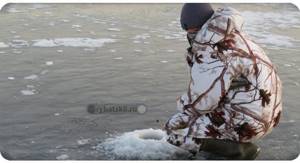
Such movements attract the silver bream, which goes on the attack during the pause phase, and less often when the jig moves upward. The method is quite complicated: the attracted individual swallows the bait extremely carefully and this moment is difficult to notice if the attack occurred while the jig was moving upward. This means that the time for hooking will be difficult to notice, and without it you won’t be able to catch the fish. You have to be extremely careful, each time noting the vibration pattern of the fishing line. Only after catching several specimens in this way can you acquire the proper skill. In a situation where the attack on the bait occurs during a pause, such difficulties do not arise, the bite is very noticeable.
Another technique for ice fishing for silver bream in the current seems simple at first glance. The jig is lowered to the bottom, and then quickly raised to a height of about a meter. Having fixed it in this position for a few seconds, the jig is smoothly lowered to the bottom, making slight vibrations. Then the movements are repeated.
The silver bream is a timid and cautious fish; noise and drilling of holes scare it away. In clear weather, it can be scared away by many holes, so experienced fishermen look for secluded places, try to make a minimum of holes and maintain maximum silence.
Playing with a jig
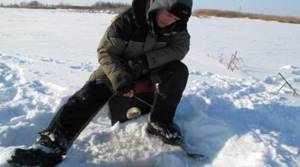
Catching silver bream requires a kind of jig play. Gustera does not tolerate sudden or fast movements, so playing with a jig comes down to slow, even and low-amplitude movements.
Something like this: the jig approaches the very bottom, after which it is slowly and smoothly raised to a height of about 20 cm. This is followed by a pause, and without fail. Without a pause, fishing will not take place. In conclusion, the jig also slowly and evenly falls down. After the jig touches the bottom, there is a pause again. The silver bream attacks the bait while the jig is moving upward or during a pause. As practice shows, 90% of bites occur during pauses.
If the silver bream pecks during a pause, then the moment of the bite can be easily recorded, but if during the rise of the jig, then everything is more complicated. This is due to the fact that the fishing rod, along with the nod, is in motion, and the fish takes the bait very carefully. As a rule, you can’t catch a fish without hooking, and in order to hook it in time, you also need to notice it in time. If you manage to catch several white breams, you can adapt to this type of bite.
Depending on the conditions, the silver bream can be located on any water horizon, starting from the very bottom and ending with the uppermost horizon, located near the ice. Therefore, the task is further complicated by this factor. The fisherman quite often has to change the fishing depth in order to find a school of silver bream.
Tackle for winter fishing for silver bream
The tackle is simple. You can use both a float and a nodding fishing rod. And the nodding fishing rod is the most popular and I advise you to use just such a fishing rod. When the silver bream begins to peck, its bites can be so gentle that it will be difficult to notice them on the float. Therefore, a winter rod with a sensitive nod is ideal.
Equipment for winter fishing for silver bream should be close to the following characteristics:
- fishing line - 0.08-0.15 mm (optimally 0.12);
- jig - small, 2-3 mm in diameter with a small hook;
- nod - sensitive;
- float - when fishing with a float rod, use a very sensitive extended float.
Nothing complicated. The simplest and thinnest tackle will be optimal for catching silver bream in winter.
Playing with a jig
When fishing for silver bream, playing with a jig should be very smooth, and the amplitude of oscillations should be small. The most common and catchy jig game when fishing for silver bream is this. The jig sinks to the very bottom, and then slowly and smoothly rises from the bottom by about 20 cm. When the jig is raised to the top point, pause, then lower it just as smoothly and pause when the jig touches the bottom.
The white bream bite usually occurs during pauses or when the jig is raised. The most difficult thing is to notice the bite of a silver bream during the rise, because when lifting the jig you need to play and the nod is in motion, but the silver bream bites very carefully and it is very difficult to distinguish a bite from a simple movement of the nod. But, having caught a dozen white bream, the eye instantly gets used to it and the bites of the white bream are noticed very easily. Well, the bites of the silver bream during pauses are very noticeable and do not cause any difficulties.
It is worth remembering that the silver bream can peck both from the bottom and in any other layer of water. To the point that silver bream can be caught right under the ice. Therefore, if there are no silver bream bites at the bottom, explore other fishing horizons.
